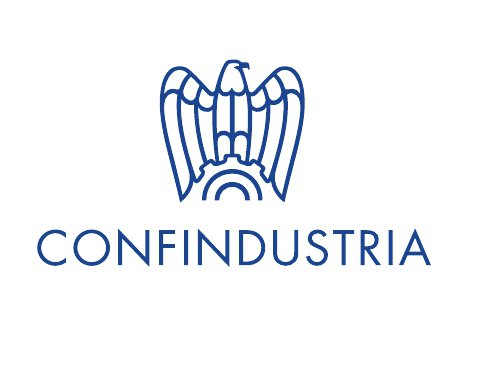China's major sportswear brands posted strong growth in the third quarter, while foreign sportswear giants such as Nike and Adidas are declining, so @globaltimesnews argues that marketing and good quality will allow Chinese companies to lead the market, shaking off the impact of COVID-19. In fact, economic growth is improving a bit, but it is still weak precisely because of lockdowns, as well as real estate, as reported by @AP.
The leading domestic sportswear companies released their third-quarter earnings last week. Xtep International Holdings said its retail sales grew by 20-25 percent year-on-year.
[Chinese sportswear brands post strong growth in Q3- GT]
ANTA Sports Products said its retail revenues grew by single digits and its FILA brand recorded 10-20 percent growth, and 361 Degrees International said its growth in the quarter reached double digits, while its children's clothing segment saw revenues rise 20-25 percent.
The top domestic sports brands' first-half revenues reached a combined 47.71 billion yuan, and with their growth momentum showing no signs of slowing, the full-year figure is expected to breach 100 billion yuan, news portal jiemian.com reported.
Domestic sports brands have grasped the trend of the rise of "China-chic", combining Chinese cultural elements and trendy designs to meet the demand of younger consumers, Zhang Qing, CEO of Key Solution Sports Co, a consulting firm for the sports industry in China, told the Global Times on Sunday.
"They are making continuous efforts in marketing and promotion, such as Anta's cooperation with the Beijing Winter Olympics, and Xtep's sponsorship of various running sports," Zhang added.
Despite the impact of the pandemic, outdoor camping and other outdoor sport activities began to expand, coupled with the country's major effort to promote fitness. The trends have spurred consumption of sports goods.
Producers have confidence in the nation's economic future and market demand for sports products will likely continue to rise, Zhang said.
These results were announced as foreign sports brands continued to report declining results, which analysts said was related to their taking sides in the Western' smear campaign led by the US against China's Xinjiang.
Adidas said its sales in greater China area dropped by double digits, which the company attributed to COVID-19's impact and inventory take-backs. It was the sixth consecutive quarter in which the company reported a decline.
The company's global sales increased 11 percent to 6.408 billion euros ($6.31 billion) in the quarter and it cut its full-year guidance to a mid-single-digit percentage growth, down from a mid- to high-single-digit forecast previously.
Last week, Stella International Holdings, an original equipment manufacturer for Nike and other brands such as Under Armour and Timberland, said that its third-quarter revenue growth was 4.8 percent, while the figure for the first three quarters was 13.5 percent.
In September, Nike said its China sales fell 16 percent over the year to reach $1.65 billion for the June-August quarter.
As domestic sports brands become more competitive in terms of quality, professionalism and popularity, as well as their improvement of the public's brand awareness, consumers no longer favor international brands, Zhang said.
China’s economic growth accelerated in the latest quarter but still was among the weakest in decades as the ruling Communist Party tries to reverse a downturn while enforcing anti-virus controls and a crackdown on debt in its vast real estate industry.
[China's economic growth accelerates but weak amid shutdowns – apnews.com]
The world’s second-largest economy grew by 3.9% over a year earlier in the three months ending in September, up from the previous quarter’s 0.4%, official data showed Monday.
The planned release of data last week was postponed while the ruling Communist Party met to award President Xi Jinping a new term as leader. Investors and the Chinese public watched the meeting for initiatives to stimulate the economy or reduce the impact of the “Zero COVID” strategy that has shut down cities and disrupted business, but none were announced.
The improvement is “mainly a result of more flexible” anti-virus controls that isolate individual buildings or neighborhoods instead of cities, said Iris Pang of ING in a report. But she said more lockdowns are “still a big uncertainty.”
“This uncertainty means the effectiveness of pro-growth policy would be undermined,” Pang said.
No data were immediately released for growth compared with the previous quarter, the way other major economies are measured. In the quarter ending in June, the economy shrank by 2.6% from the previous three-month period.
Growth slid in the second half of 2021 after controls on debt that regulators worry is dangerously high caused a slowdown in real estate, one of China’s biggest economic engines. Growth slumped to 4% over a year earlier in the final quarter.
Beijing has eased mortgage lending and local governments have taken over some unfinished projects to make sure buyers get apartments. But regulators are sticking to limits on debt that have forced developers into bankruptcy and caused some bigger competitors to miss payments to bondholders.
The ruling party’s “Zero COVID” strategy has temporarily shut down Shanghai and other industrial centers despite rising costs and public frustration. That has boiled over into protests in some areas at a time when other countries are easing anti-virus controls.
For the first nine months of 2022, growth was 3% over a year earlier, barely half the ruling party’s official 5.5% target. Leaders have stopped talking about that goal but promised easier lending and other measures to boost growth.
The International Monetary Fund and private sector forecasters have cut their outlooks for annual growth to as low as 3%. That would be the second-weakest since the 1980s after 2020, when growth plunged to 2.4% following the shutdown of much of the economy for two months to contain the coronavirus outbreak.
The slump hurts China’s trading partners by depressing demand for imported oil, food and consumer goods.
Repeated shutdowns and uncertainty about business conditions have devastated entrepreneurs who generate wealth and jobs. Small retailers and restaurants have closed. Others say they are struggling to stay afloat.
Beijing is using cautious, targeted stimulus instead of across-the-board spending, a strategy that will take longer to show results, economists say. Chinese leaders worry too much spending might push up politically sensitive housing costs or corporate debt.
Growth for the first half of the year was 2.5% over a year earlier, one of the weakest levels in the past three decades.



